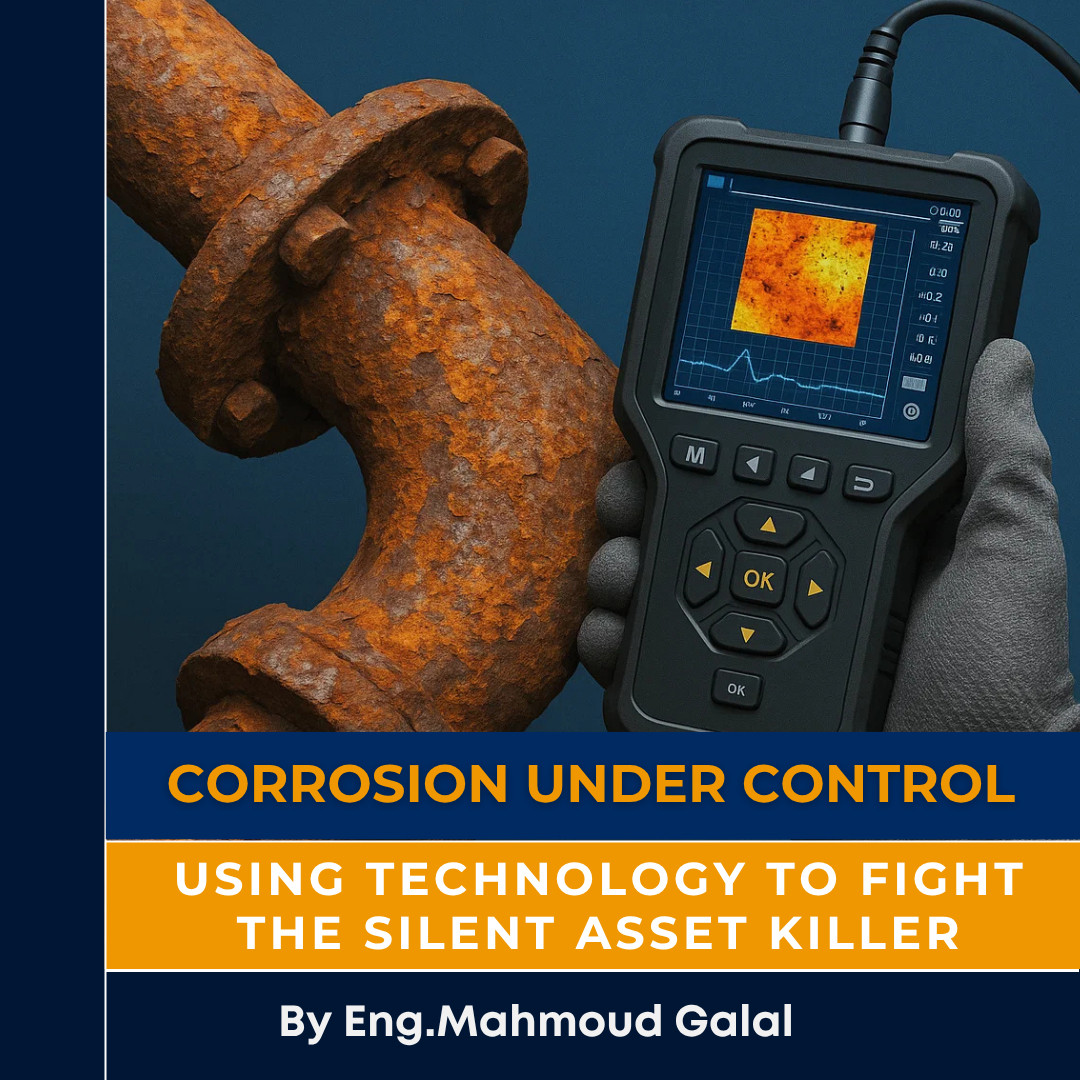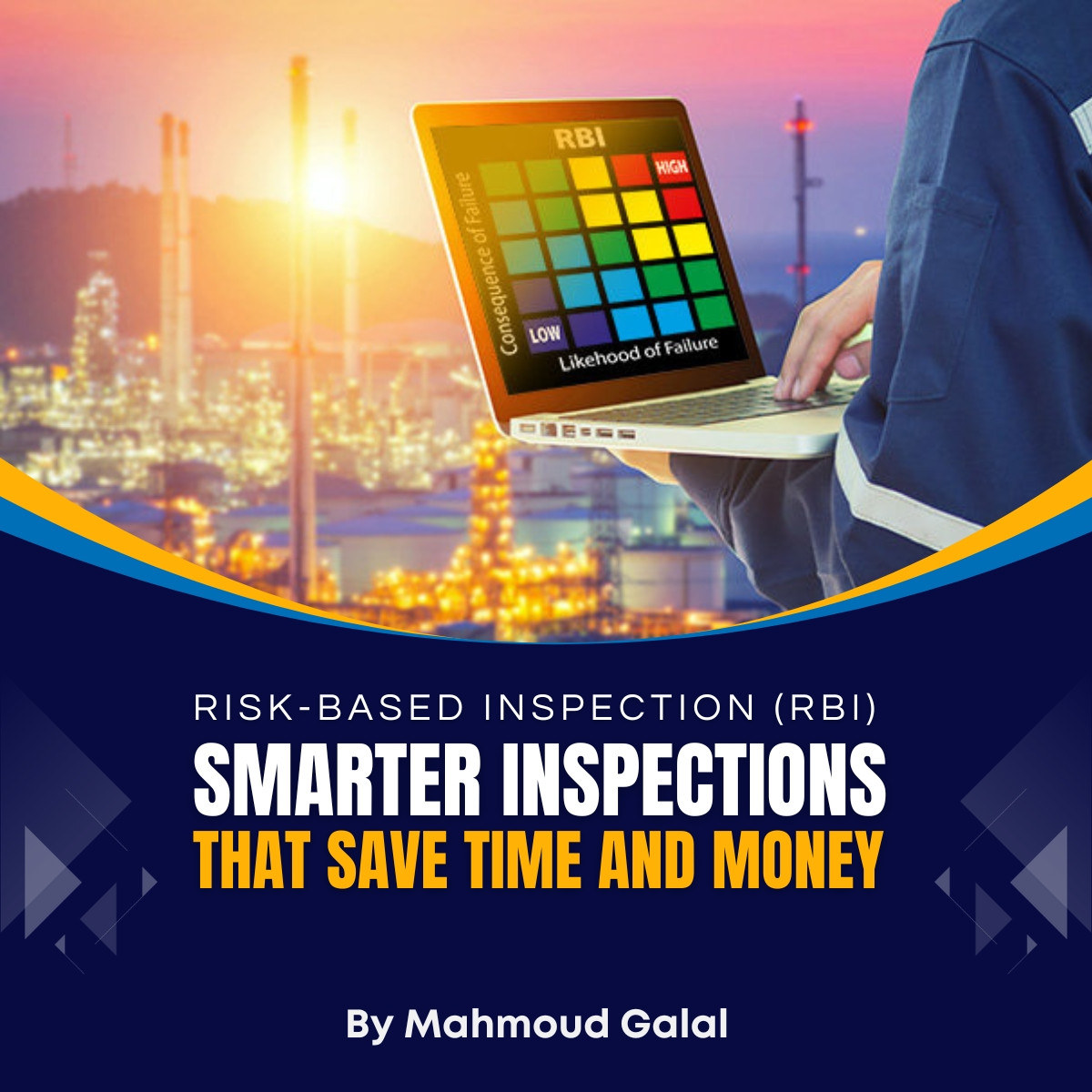
Corrosion Under Control: Using Technology to Fight the Silent Asset Killer
Here is the third article in my AIM series:
Corrosion Under Control: Using Technology to Fight the Silent Asset Killer
Corrosion doesn’t make noise. It doesn’t flash alarms. But left unnoticed, it can lead to shutdowns, leaks—or worse. For industries like oil & gas and petrochemicals, corrosion is one of the most expensive and risky threats to asset integrity.
The good news? Modern tools make it easier than ever to detect, control, and reduce corrosion—before it becomes a failure.
🧪 Understanding the Risk
Corrosion is more than rust. It’s a chemical or electrochemical reaction between a material (usually metal) and its environment. Common types include:
• Uniform corrosion: Even surface loss—often ignored until it's too late.
• Pitting corrosion: Localized and deep—harder to detect.
• Stress corrosion cracking (SCC): Happens under tension and leads to sudden failures.
• Microbiologically Influenced Corrosion (MIC): Caused by bacteria in water systems.
Each type needs a different detection method—and a different strategy.
🛠 Modern Corrosion Management Tools
• Real-Time Monitoring
Smart sensors now track wall thickness, humidity, pH, and even metal loss—helping operators react early.
• Non-Destructive Testing (NDT)
Ultrasonic testing, radiography, and guided wave tools help inspect without dismantling the equipment.
• Material Selection & Coatings
Using corrosion-resistant alloys or applying protective linings can prevent damage before it starts.
• Chemical Inhibitors
Injected into systems to reduce corrosion rates in pipelines and vessels.
• Data Analytics
By combining past inspection data with operating conditions, teams can predict where corrosion will likely appear next.
📍 Example in Action
A petrochemical site installed online corrosion monitoring probes in a high-risk piping circuit. Within three months, data showed unexpected metal loss due to a cleaning chemical. Action was taken immediately—saving weeks of downtime and a major repair cost.
📊 Key Benefits
• Early Detection = Lower Cost
The sooner corrosion is found, the cheaper it is to fix.
• Fewer Failures
Prevents leaks, pressure drops, and environmental incidents.
• Improved Safety
Keeps people and the environment safe from sudden failures.
• Better Compliance
Supports standards like API 510, 653, 570, 571, and NACE guidelines.
🚧 Common Pitfalls
• Ignoring ‘Low-Risk’ Areas: Corrosion often starts where it’s least expected.
• Infrequent Monitoring: Spot checks miss early signs.
• One-Size-Fits-All Approaches: Each asset and environment needs its own strategy.
•
🔄 Final Thought
Corrosion is silent—but not invisible. With the right tools, mindset, and strategy, it can be controlled. Managing corrosion isn’t just a maintenance task—it’s a core part of protecting your business, people, and environment.
Next up: “AI & Predictive Maintenance: A Game-Changer for Asset Reliability”
Ready to continue?
By Eng. Mahmoud Galal


0 comments